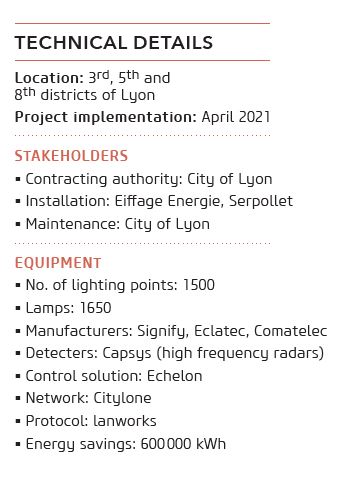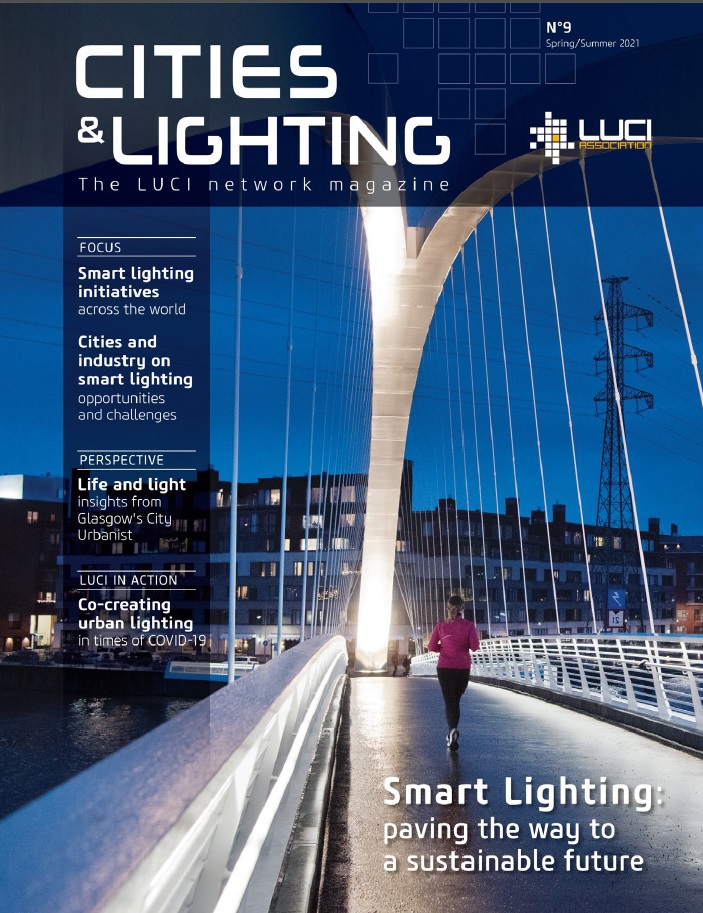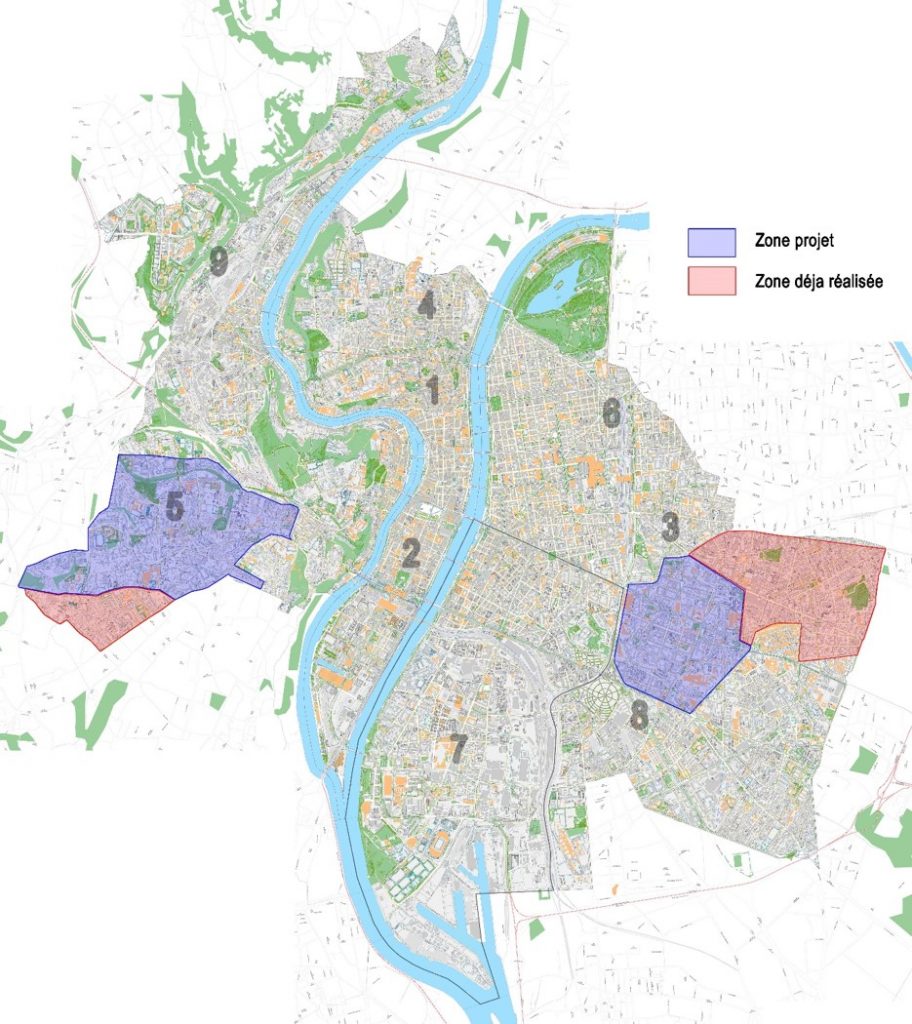Lyon extends presence-detection pilot
In 2021, the City of Lyon finalised the extension of a streetlighting pilot on presence detection of vehicles via radio frequency to three more residential districts of the city.
Lyon has been working with adaptive lighting based on presence detection for over 15 years. It first began in small enclosed public spaces or walkways and pedestrian bridges. These initiatives enabled the city to test such technologies and their acceptance by citizens and led to the city launching a pilot on a larger scale of an entire neighbourhood.
In 2014, Lyon launched a neighbourhood-wide pilot project to test street lighting based on presence-detection of vehicles. Over 200 lighting points in Lyon’s 5th district, were connected to a centralised control capable of detecting when vehicles passed on the road using magnetometers and high frequency radars, and adjust lighting levels accordingly. This was the first time that such a device was tested on such large scale. The success of this initiative has now led the city to extend this installation to three more residential districts of the city.
“The initial pilot in 2014 aimed to test the technology, its social acceptability and the various parameters that could be applied (lighting levels, thresholds, ramps, delays, etc.) as well as the resulting energy-savings. The pilot did not work perfectly at first, we had to improve it technically and adjust the settings, but the energy-savings were there: we saved 70% in energy.”
Frédéric Durand, Project Manager at the Urban Lighting Department in Lyon
The city continued improving the device and had already extended its use to a second area, the Montchat district. “We continued with our objective of adaptive lighting as required, as this enables us to save energy without deteriorating the lighting service we provide to the public.” says F. Durand.
The pilots have provided important lessons that the city has used to improve subsequent initiatives. For example, the municipality now only launches the presence detection between 22:00 and 6:00 in the morning, since during the
other busier hours, heavy traffic led to the installation flashing constantly.
“We also had to make several technical adjustments between the detectors and the communication protocol and had to take the decision to limit this communication to avoid saturation.”
Frédéric Durand, Project Manager at the Urban Lighting Department in Lyon
It was also important to have remote management deployed in the test zone, in order to facilitate maintenance of such a system, since visual human verification is no longer possible in such a complex setting.
In 2021, this system was extended to new residential neighbourhoods in the 3rd, 5th and 8th districts of Lyon with over 1650 lighting points involved. In these areas, the streetlights will go into “pedestrian” mode, with reduced brightness, sufficient for passers-by. Sensors at each end of the street detect the arrival of a vehicle and relaunch the maximum intensity of light as the vehicle passes. As a result, the streetlights are in reduced operation for 90% of the time, leading to 70% energy-savings for the city.


An edited version of this article originally appeared in Cities & Lighting magazine (Issue #9, 2021).
More on Lyon on LUCI’s website:
- LUCI and 3 member cities launch new EU project on permanent light art
- Call for projects: Fête des Lumières 2021
- City of Lyon receives national award for new tunnel lighting
- Lyon Light Festival Forum 2020 – A celebration of creative light for unprecedented times
- Call for projects – Fête des Lumières 2020
- Cities during Covid19: thanking and honouring through light
- Call for “Emergence” Projects – Lyon Fête des Lumières 2020
- Lyon Light Festival Forum 2019 – lighting cities with poetry and humanity
- Lyon launches Lumen – lighting hub of the future
- New lighting for Ho Chi Minh City Museum of Fine Arts
Photo credits: © City of Lyon



